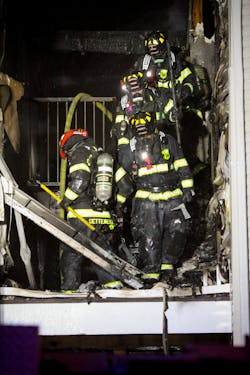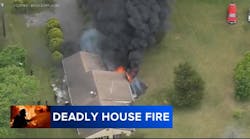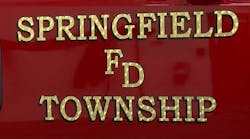When was the last time that you analyzed the effectiveness of your post-incident analysis? You might have heard of it referred to as call critiques and/or tailboard talks, but, regardless, the purpose should be the same: improve the safety and efficiency of your response.
You must ask yourself whether your post-incident analysis meets your/your department’s goals, and your goals should be measurable action items.
Wrong ways
Some post-incident analysis meetings are nothing more than cheerleader sessions: All of the good from an incident is pointed out, members who were on scene pat each other on the back and the session is treated as a participation ribbon. However, too often in the fire service, no injuries at an incident serves as a benchmark for successful tactics.
Other sessions can be super negative: Members cast blame, and the session turns into a head hunt.
Neither of these scenarios assists you in accomplishing what should be your ultimate goal: improved fireground operations.
Prioritization
The top 5 approach to post-incident analysis was born out of my observation of industrial emergency response team drills. In the earliest days of that observation, the members of the observation team sat in a room and gathered everything that we thought could go differently. We then talked with the industrial emergency response team and gave the members a laundry list of items.
We soon realized that we weren’t accomplishing our goal of making them a better team. These were industrial responders. Their primary job was industrial work, not emergency response.
The top 5 was developed to provide a focus after a drill: The observation team writes down the top 5 incident successes and the top 5 growth opportunities. This maintains a balance of feedback between the positives and the areas that need work.
(Note: Five makes sense. We teach students that five is an optimal span of control within the incident command system [ICS]). Five is a manageable number of skills that can be worked on. Top 5 makes us prioritize improvement needs into manageable pieces.)As an organization, you must evaluate a growth opportunity that’s assigned to determine whether it’s an issue that must be addressed on the individual or company level. In the same vein, is it something major that must be addressed as an organization? Are procedures flawed? Must the issue be addressed through training?
As the individual/company/organization grows, opportunities to improve become finer tuned, almost to the point that some will say that it’s nitpicking. However, it’s in the fine details where efficiencies on the fireground are built. Efficiencies improve the life safety of citizens and firefighters.
Some might need to be reminded: Fires aren’t getting any cooler or slower. Interior fire attacks are riding on thin margins.
Professional athletes are the top athletes in their sport, but they still review film and identify areas to improve. Emergency responders should be no different. Emergency responders should be improving continually.
Address immediately
Growth opportunities should be focused, measurable goals that improve operations for efficiency and safety. Incident commanders (ICs) must assess how critical the growth opportunity is.
Often, post-incident analysis doesn’t occur until the next shift. That’s wrong. Critical growth opportunities must be addressed immediately—for example, if a crew didn’t deploy a handline properly and the hose became a spaghetti mess and fire attack was delayed as a result. You can’t risk a crew being dispatched to another working incident and making the same mistake.
This immediate action might require the IC to report directly to the engine house of the company in question to address the issue, regardless of the time of day.
Also, when you evaluate a behavior, you must remove any bias. You must remove the names, the faces and the people who were involved and concentrate on the actions that didn’t meet the standard. This isn’t about who did or didn’t do something. This is about the task.
When you look at the evaluating benchmark standard, you must establish where the standard was communicated. You can’t hold someone accountable for a standard that wasn’t communicated.As well, all communications must be nonjudgmental. Again, you’re looking at actions or inactions, not individuals.
After each growth opportunity that was associated with the aforementioned industrial drill evaluations was identified, the drill evaluation team asked itself where in the training program the standard was communicated. The reality is that sometimes the breakdown was in the lesson plans.
Finally, if the standard was communicated to an individual, the action or inaction might need to become disciplinary if it has become a repeated issue.
Evaluation standards
Consistency is important. The standard to which a company is held must be communicated long before an incident. This standard must be reinforced after an incident.
At times, it appears that post-incident analysis is an off-the-top-of-the-head-type event or an event to address the pet peeves of the IC. The senior staff of the organization should develop a standard evaluation tool to evaluate incidents. Some examples would be:
- Proper size-up
- Implementation of ICS
- Proper use of IC functions
- Clearly defined and executed tactics
- Declaration of strategy
- Communications (clear; proper use/selection of radio channel; radio traffic; information from dispatch, radio reports, incident size-up and assigning companies)
- Proper PPE by all responders who were on scene
- Proper selection and use of emergency response equipment
- Staging
- Accountability
- Water supply
- Safety
Trainings & small incidents
Company officers must commit to evaluating training sessions as well as calls.
The branches of the military evaluate trainings formally in a debriefing room. The room doesn’t have any distractions, and outsiders aren’t allowed to enter the debrief.
In the fire service, informal debriefings happen every day at the firehouse kitchen table. Make the kitchen table talk a distraction-free zone: TV off and phones put away.
You don’t need to limit post-incident analysis to the big calls. That said, smaller incidents, such as motor vehicle accidents, and major medical calls only might require a top 3. These reviews can be an informal crew discussion around the kitchen table over a cup of coffee.
Shared information
After a major incident, the top 5 must be shared with other companies that were on scene. Often, companies perform as an independent cog in an incident, but they might not understand how their performance affected others who were on the fireground.
Furthermore, the presentation of the top 5 shouldn’t be limited to companies that were on scene. It must be shared with other companies, because incident successes can be learning opportunities for other companies. There’s a chance that another company might not have faced a similar challenge. There also is a chance that one company has a more efficient approach to the incident than another company.
The critical objective
The post-incident analysis is a simple concept. However, it produces honest, measurable results. In fact, what emerges from the analysis can produce larger yields than what multiple-page reports and hourslong meetings might deliver. Furthermore, it’s a perfect training tool.
The top 5 concept makes improvement manageable for fire companies. It’s based on real incidents in a department’s response area. It identifies growth opportunities within individual companies. It allows training divisions to evaluate the successes of the training program as well as to identify areas where additional training is needed.
The fire service owes it to its members and to citizens to be the best service that it can be. The ultimate goal of any post-incident review should be to improve your craft.








